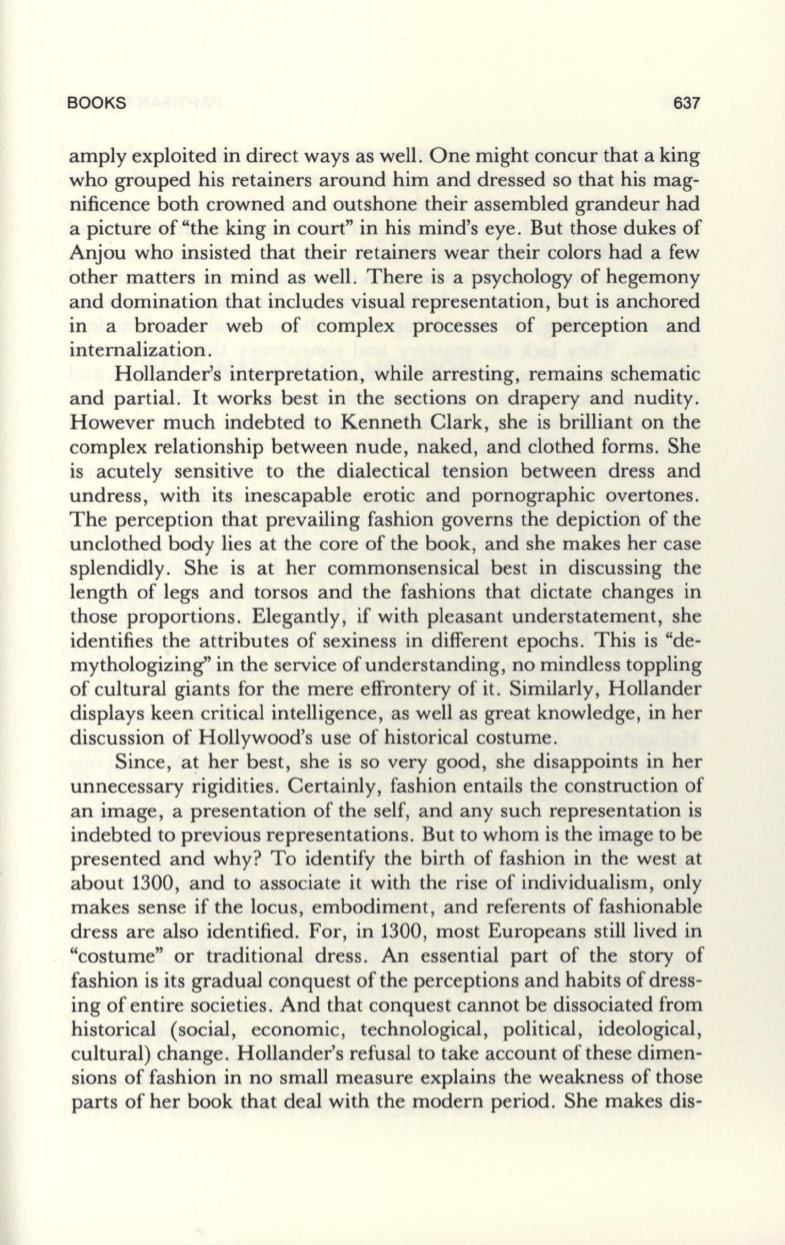
BOOKS
637
amply exploited in direct ways as well . One might concur that a king
who grouped his retainers around him and dressed so that his mag–
nificence both crowned and outshone their assembled grandeur had
a picture of "the king in court" in his mind's eye . But those dukes of
Anjou who insisted that their retainers wear their colors had a few
other matters in mind as well. There is a psychology of hegemony
and domination that includes visual representation, but is anchored
in a broader web of complex processes of perception and
internalization .
Hollander's interpretation, while arresting, remains schematic
and partial.
It
works best in the sections on drapery and nudity.
However much indebted to Kenneth Clark, she is brilliant on the
complex relationship between nude, naked , and clothed forms. She
is acutely sensitive to the dialectical tension between dress and
undress, with its inescapable erotic and pornographic overtones .
The perception that prevailing fashion governs the depiction of the
unclothed body lies at the core of the book, and she makes her case
splendidly. She is at her commonsensical best in discussing the
length of legs and torsos and the fashions that dictate changes in
those proportions . Elegantly, if with pleasant understatement, she
identifies the attributes of sexiness in different epochs. This is "de–
mythologizing" in the service of understanding, no mindless toppling
of cultural giants for the mere effrontery of it. Similarly, Hollander
displays keen critical intelligence, as well as great knowledge, in her
discussion of Hollywood's use of historical costume .
Since, at her best, she is so very good, she disappoints in her
unnecessary rigidities . Certainly, fashion entails the construction of
an image, a presentation of the self, and any such representation is
indebted to previous representations. But to whom is the image to be
presented and why? To identify the birth of fashion in the west at
about 1300, and to associate it with the rise of individualism, only
makes sense if the locus, embodiment , and referents of fashionable
dress are also identified. For, in 1300, most Europeans still lived in
"costume" or traditional dress. An essential part of the story of
fashion is its gradual conquest of the perceptions and habits of dress–
ing of entire societies. And that conquest cannot be dissociated from
historical (social , economic, technological, political , ideological,
cultural) change. Hollander's refusal to take account of these dimen–
sions of fashion in no small measure explains the weakness of those
parts of her book that deal with the modern period . She makes dis-


